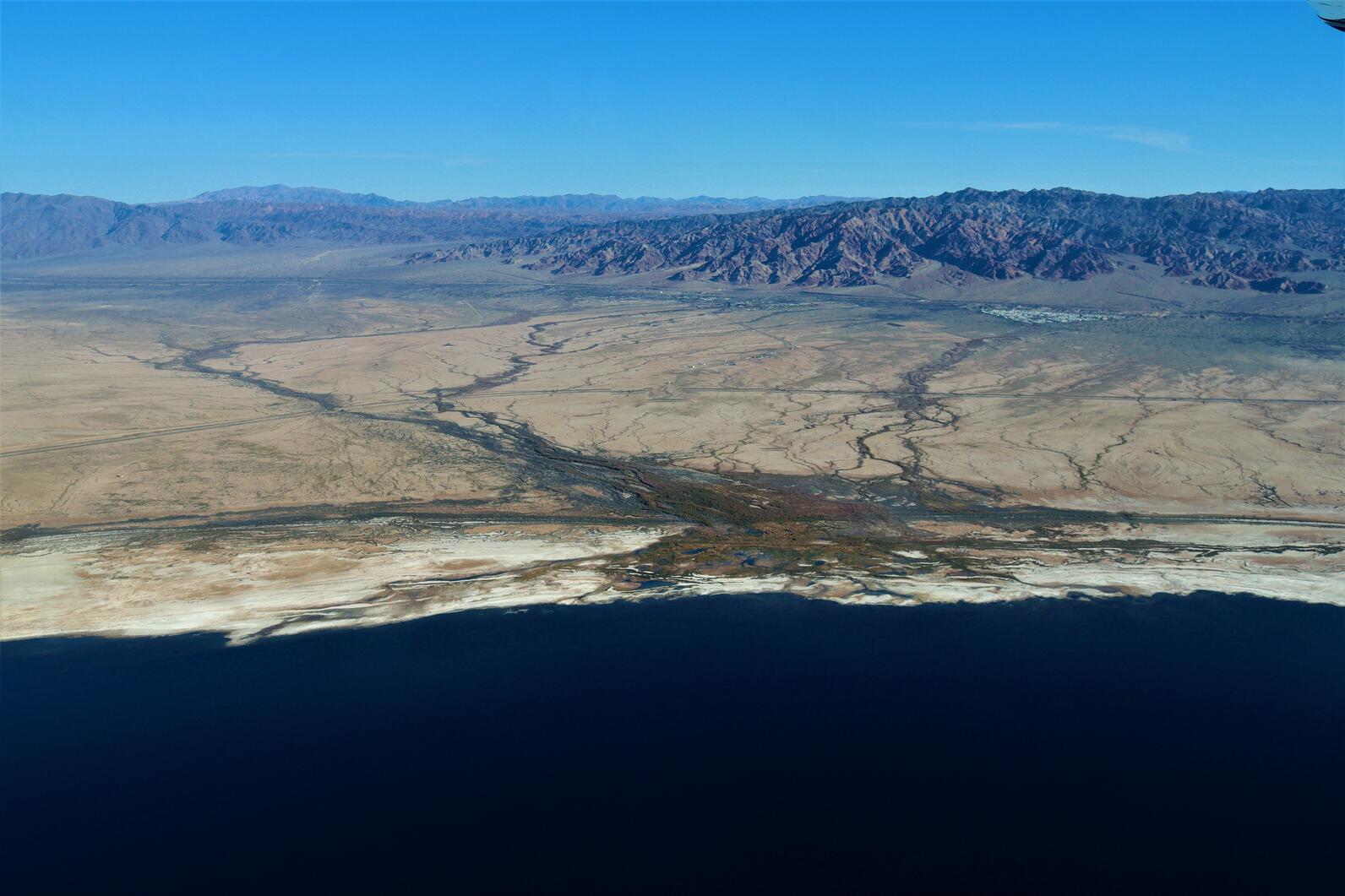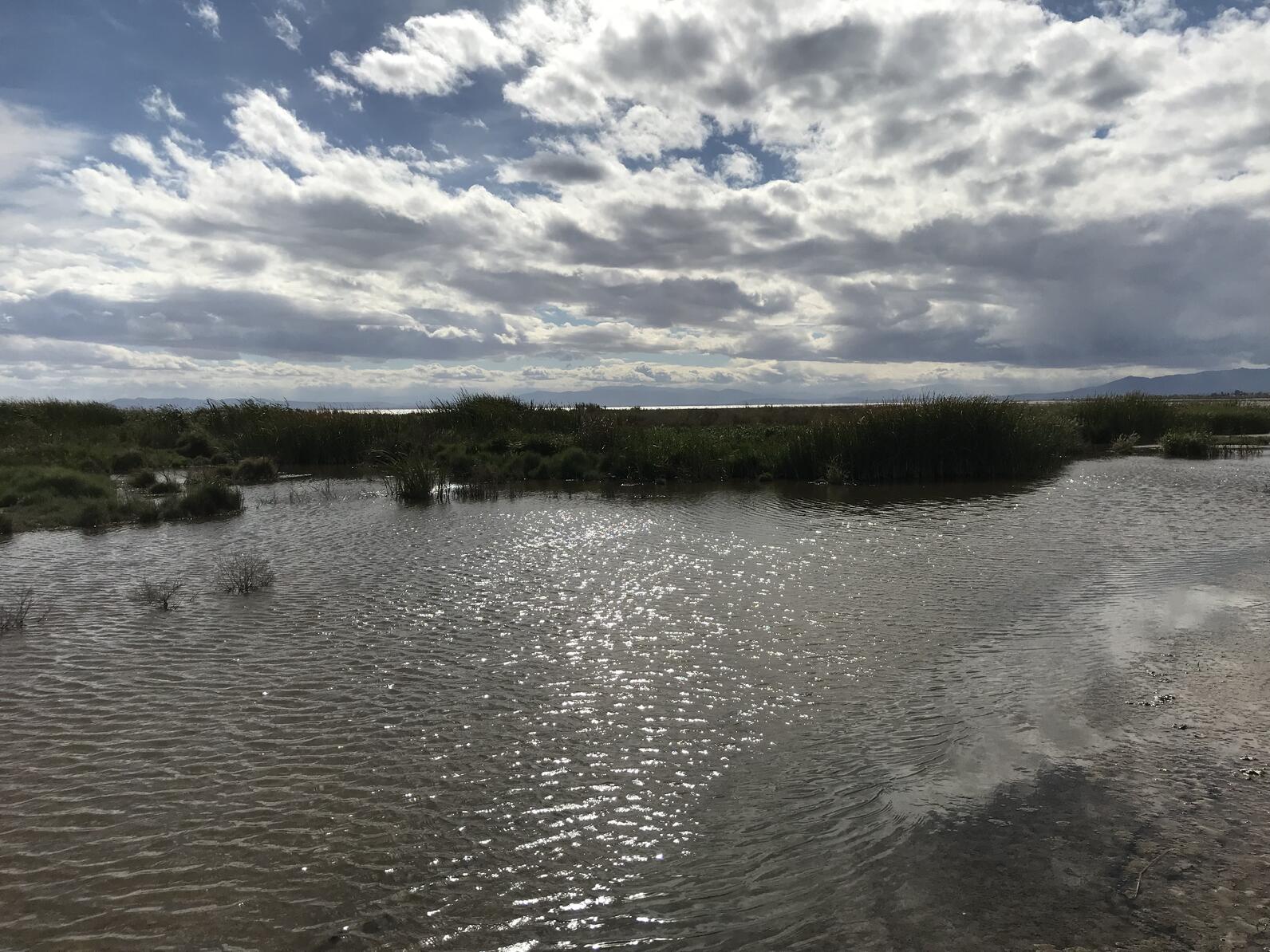Ridgway's Rail
Latin: Rallus obsoletus
How an emerging wetland at the Salton Sea offers new hope for migratory birds and local communities.
Bombay Beach Wetland Project | Proyecto de humedales de Bombay Beach Photo: Emily Tozzi/Formation Environmental
The Salton Sea’s waterline continues to rapidly recede, leaving behind exposed playa that exacerbates respiratory diseases and other issues for nearby communities.
Unexpectedly, however, the shoreline’s recession has created an opportunity for nature to take its course, evident by the presence of newly emerging wetlands around the Salton Sea. There are roughly 6,000 acres of newly formed wetlands that have emerged around the Salton Sea. They are a product of agricultural outflows or from natural seeps from springs. In June of 2020, Audubon California released a report titled "Identifying Existing Areas for Habitat Protection/Enhancement and Dust Suppression Projects on the Salton Sea Exposed Playa" that assesses the amount and distribution of these wetlands.
Audubon California has received a grant from the United States Bureau of Reclamation that will fund project design, biological surveys, and community engagement for both dust suppression and the expansion, stabilization, restoration, and enhancement of 250 acres of these emerging wetlands near the town of Bombay Beach on the Salton Sea. These incidental wetlands can serve a dual purpose in creating vital habitat for migrating birds and mitigating the dust that endangers the respiratory health of the 650,000 people who live near the Salton Sea.
The existing Bombay Beach Wetland is located on the southeastern shore of the Salton Sea, about 3 miles east of the Bombay Beach community. It consists of a wetland and surrounding vegetation that has developed where several prominent washes converge and groundwater discharges. There are existing saline wetlands and brackish pond habitats for species including the Yuma Ridgway’s Rail, American Avocet, Northern Pintail, and possibly the Desert Pupfish.
The existing wetland will remain small, however, without restoration and stabilization. This is because the higher quality habitat area upslope is being increasingly dominated by a monoculture of the invasive Tamarisk plant. The wildlife species, however, are already using the area, despite the lack of formal restoration or management, indicating that there is an opportunity to enhance the area.
The Salton Sea as a whole is important for more than 300 species of resident and migratory birds. Additionally, where there is not wetland or vegetated habitats, there is bare playa that is responsible for dust pollution to the surrounding communities. It is imperative that these emerging wetlands at the Salton Sea be stabilized to ensure sufficient habitat along the Pacific Flyway and to mitigate dust pollution.

The Bombay Beach Wetlands project aims to stabilize and enhance various emergent and saline wetlands and playa habitats, protect human health by optimizing water use to promote dust suppression in nearby playas, and provide opportunities for recreational public access.
Wetland preservation and enhancement will be done by protecting existing vegetation, wetland, and aquatic habitat areas from damaging stormwater inflows with the reinforcement of shoreline berms that protect the area.
The reinforcement of berms, complemented by water-use optimization infrastructure, will allow for water to have a maximum environmental beneficial use. This project aims to optimize water use to irrigate vegetation around the adjacent playa for dust control, to maintain the salinity in wetland areas for optimal species productivity, and to enhance and promote new habitat in the wetland.
This project also aims to include outdoor recreation opportunities for the community and is receptive to public feedback on potential project design alternatives and public access ideas. We hope to make this emergent wetland an area that the public can experience, the birds can live in, and an area that can help mitigate public health issues.
The Bombay Beach Wetland Project is in the first phase, which is expected to take two years, which includes habitat and dust control project design, scientific monitoring and data collection, and community engagement in planning design. Following successful completion of this planning phase, groundbreaking on construction would start in 2023.

We are interested in getting public feedback and input on our project design and public access ideas. You can submit a public comment through our survey form here. Additionally, please join us for our second Community Advisory Meeting on Zoom to learn more about our project and share your ideas. We will announce this meeting on Facebook. The consultant for this project is Formation Environmental, LLC, with other groups pending as progress develops.
View our Frequently Asked Questions document, available both in Spanish and English, to get more information.
Funding for this project is being provided by the U.S Bureau of Reclamation. This project is being completed in cooperation with the Imperial Irrigation District and the California Department of Fish and Wildlife.
Coalition of conservation and community groups says groundbreaking is positive step towards ending years of inaction at California’s largest lake.
Discover the data and resources about the habitats and changes happening at the Salton Sea from across the network.
Audubon California releases report detailing emerging wetlands at the Salton Sea.
Estamos estrenando nuestra nueva, descargable guía de campo de algunas aves del Valle de Coachella, las cuales son culturalmente importante para los Cahuilla.
Our new, downloadable pocket field guide features some birds of the Coachella Valley that are culturally significant to the Cahuilla people of the Torres-Martinez Band.
Audubon science finds that two-thirds of North American birds are at risk of extinction from climate change.
Our newsletter is fun way to get our latest stories and important conservation updates from across the state.
Help secure the future for birds at risk from climate change, habitat loss and other threats. Your support will power our science, education, advocacy and on-the-ground conservation efforts.
California is a global biodiversity hotspots, with one of the greatest concentrations of living species on Earth.